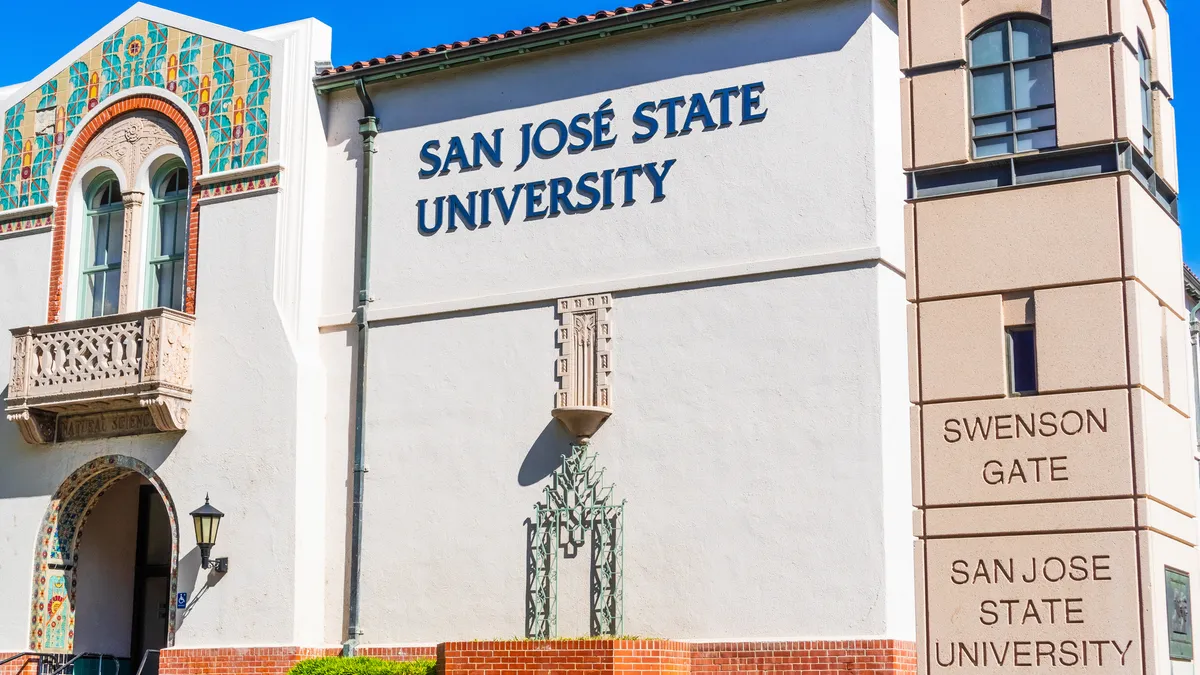Higher education leaders in Vermont last week revealed plans to consolidate the administration of two of the state's five public college campuses, working to strike a balance between increasing economic efficiency while maintaining institutional identities that are important to the respective areas surrounding Johnson State College and Lyndon State College.
Separated by less than 50 miles, the two schools have distinct program strengths in dramatically different areas. The system promotes JSC as a leading institution for training in health and environmental sciences, while Lyndon State offers a liberal arts-leaning academic focus with specialty in education, journalism and business.
The consolidation plan is the latest among several states throughout the country in the last several years, made in an effort to adjust costs of operation and attendance to balance with growing state spending obligations in pension and health care benefits for employees.
As enrollment decreases and the competition for students grows beyond state borders, higher education systems are feeling the pressure to make institutions more appealing and competitive in research and output, even if it means combining two to make one stronger institution.
But some higher ed experts say the benefits of consolidating institutional operations don’t balance the costs to campuses and communities in the long run.
How economy drives the merger imperative
Both Johnson State and Lyndon State are running deficits, and officials say the consolidation could help both campuses to realize revenue gains faster than they could as separate schools.
In Georgia, economic depression was a major factor in the state pursuing massive campus reorganization strategies. In November 2011, the University System of Georgia approved six principles that would serve as guidance in its efforts to consolidate institutions, aimed at improving economic and educational outcomes for citizens across the state, improving institutional quality and the avoidance of program duplication among schools.
The system has since consolidated 12 campuses statewide, with its most recent consolidation being that of historically black Albany State University and nearby Darton State College. Albany State remained as the sole institution from the consolidation, just the second HBCU to survive merger with a predominantly white institution since the federal court-mandated desegregation merger order of Tennessee State University and the University of Tennessee-Nashville in 1979.
ASU was reintroduced as a new institution, with a new mission statement, leadership and service infrastructure, and leaders pointed out the new opportunities it would create for residents of Southwestern Georgia as a result.
“The consolidation of Albany State University and Darton State College is a historic milestone for these institutions, our University System, the Albany community and our state,” said University System Chairman Neil Pruitt. “We are creating an institution of nearly 9,000 students, which would be the largest institution of higher education in Southwest Georgia. We have the opportunity to transform how we serve the community and the region.”
Tourism is one of the region’s major economic drivers, with a $222 million in impact in 2014, according to the state’s Department of Economic Impact. A significant portion of that tourism: Albany State sporting and alumni events.
When consolidation doesn’t work
Some states have considered consolidation, but have been turned away by harsh financial realities or political backlash.
Last fall, Salem State University and the Montserrat College of Art shelved a proposed merger after discovering that the costs of facility and technology upgrades, faculty salary structure and reduction in student aid far outweighed the financial benefits of merging the two schools.
In Louisiana, where higher education funding has been among the nation’s worst since 2008, officials tried in 2011 to propose a merger of the University of New Orleans and historically black Southern University at New Orleans.
The proposal, which many advocates saw as an attempt to marginalize opportunities for black students in the city, sought to merge the two commuter campuses with poor graduation rates — SUNO with an 8% mark at the time, and UNO with a 21% rate.
Pressure from black elected officials in the state killed the bill, but talk about merger of the two schools resurfaced last February among lawmakers.
UNO President Peter Fos, in an interview with the Baton Rouge Advocate, said that combining state resources doesn’t always yield greater efficiency for students.
“I’ve had people ask me if there’s a consolidation plan, and there isn’t,” he said. “One of the things that people don’t understand is that I’m not sure the cost of educating a student would change... Sometimes you’re trying to take an apple and merge it with an orange, and you don’t get anything that’s good."





















